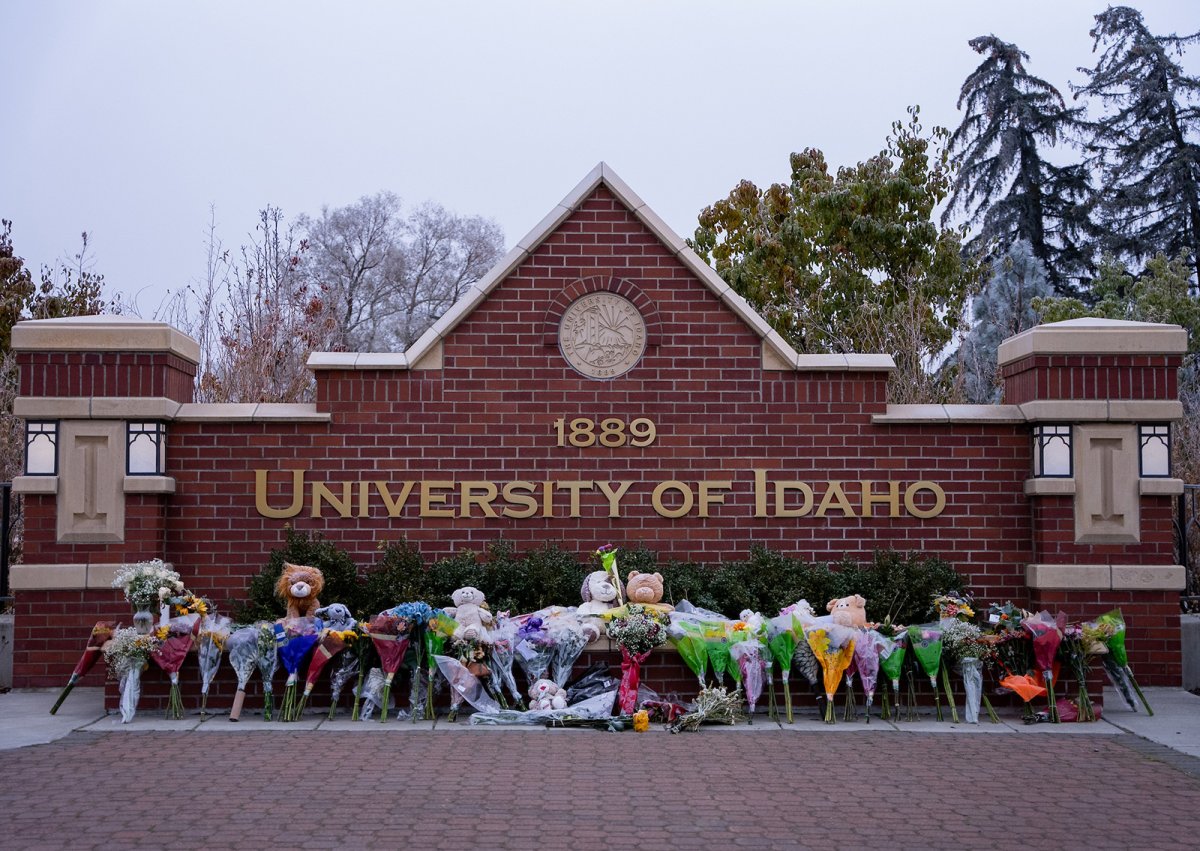Evidence on the bodies of four murdered University of Idaho students could provide a breakthrough in the case, experts told Newsweek.
Police are working to identify the person or people responsible for fatally stabbing Kaylee Goncalves, Madison Mogen, Xana Kernodle and Ethan Chapin in their beds inside an off-campus house in Moscow on November 13.
Two weeks on, there are no named suspects and no weapon has been found. Police have said they believe a "fixed-blade knife" was used.
The Latah County Coroner has said the four victims were likely asleep when they were attacked and that some had defensive wounds.

That information indicates a struggle took place and experts believe crucial evidence that could solve the case could be on the bodies of the victims.
Police should have taken immediate steps to avoid contaminating that evidence, said Joseph Giacalone, a retired New York Police Department sergeant and adjunct professor at John Jay College of Criminal Justice.
"I don't know if this happened, but the victims' hands should have been bagged," Giacalone told Newsweek.
"Because you have an up close and personal attack, the chances that maybe the victims scratched the perpetrator [are] pretty high.
"They're trying to defend the attack off, and they'll do anything they can, gouge their eyes or their face and that is a real possibility. But if you didn't bag the hands when you took the bodies out or at the time, you can have a chance of losing that kind of evidence."
Aaron Snell, communications director for the Idaho State Police, told Newsweek: "It is always interesting when former law enforcement members speculate about an ongoing investigation. Our investigators have the latest training and use the most current law enforcement practices."
Forensics expert Joseph Scott Morgan said DNA from blood on the bodies may provide clues that could aid police in their investigation.
"Any DNA that is on the surface of that weapon from the first attack, then is introduced into the attack on the second one, and so forth, and so on. So you get this co-mingling of DNA evidence," Morgan, a distinguished scholar of applied forensics at Jacksonville State University in Alabama, told Newsweek.
While that provides a huge challenge to those analyzing the DNA, Morgan said it could also help determine the order in which the victims were attacked.
"If you can determine who has the least amount of co-mingled DNA evidence on that person, that might give you an indication as to who was attacked first," he said. "It would perhaps give you an idea of who was targeted."
Police believe the killings were targeted but have not specified why they think that or which student may have been targeted.
The Moscow Police Department has regularly released information about the timeline of the night the students were killed and knocked down rumors circulating about the case.
According to investigators, Goncalves and Mogen had been out at a bar and a food truck and got a ride home from downtown Moscow, reaching their residence at around 1:56 a.m. on November 13. Police had earlier thought they got home at around 1:45 a.m.
Kernodle and Chapin had been at a fraternity house and returned home around 1:45 a.m, while two other roommates who were also out in Moscow got home at around 1 a.m.
The two roommates slept through the attack, police said, and summoned friends to the residence in the morning because they believed one of the victims had passed out and was not waking up.
One of their cell phones was used to make a 911 call requesting aid at 11:58 a.m. and officers arrived to find two of the victims on the second floor and the other two on the third floor. Police have said the roommates and people who were in the residence when the 911 call was made are not believed to be involved in the crime.
As the community remains on edge and desperate for answers, Giacalone urged patience.
"When you're dealing with technology, and you're dealing with DNA and toxicology reports, you have to be patient," he said. "This isn't CSI: Miami, where they solve a quadruple murder in 35 minutes with three commercials. It doesn't happen that way."
Update 11/30/22, 3:30 a.m. ET: This article has been updated with a comment from Aaron Snell.
Uncommon Knowledge
Newsweek is committed to challenging conventional wisdom and finding connections in the search for common ground.
Newsweek is committed to challenging conventional wisdom and finding connections in the search for common ground.
About the writer
Khaleda Rahman is Newsweek's Senior News Reporter based in London, UK. Her focus is reporting on abortion rights, race, education, ... Read more
To read how Newsweek uses AI as a newsroom tool, Click here.








